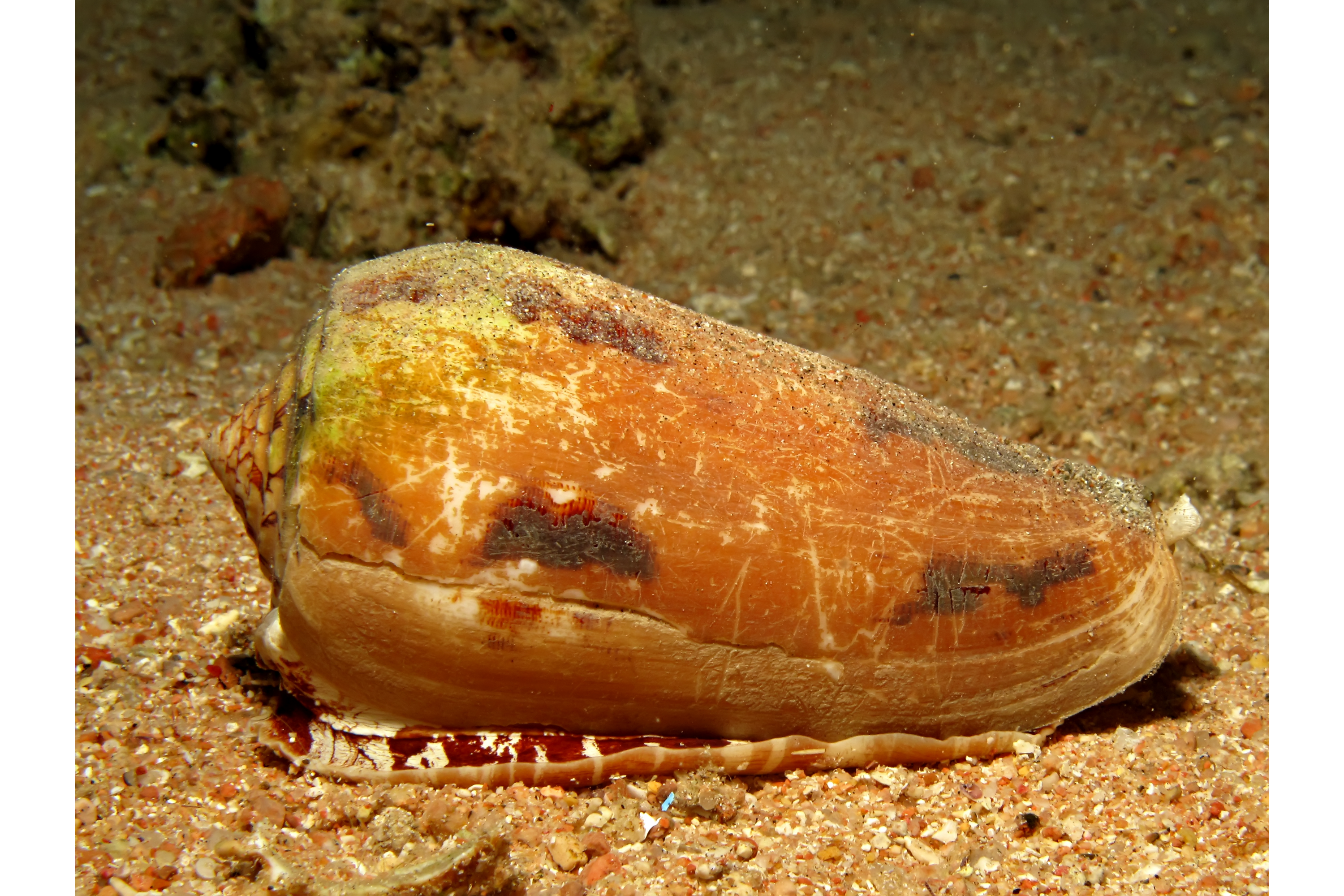Geography cone
(Conus geographus)

Description
Conus geographus, popularly called the geography cone or the geographer cone, is a species of predatory cone snail. It lives in reefs of the tropical Indo-Pacific, and hunts small fish. Although all cone snails hunt and kill prey using venom, the venom of this species is potent enough to kill humans. The variety Conus geographus var. rosea G. B. Sowerby I, 1833 is a synonym of Conus eldredi Morrison, 1955. C. geographus has a broad, thin shell, cylindrically inflated. Geography cones grow to about 10 to 15 cm (4 to 6 in) in length. The size of an adult shell varies between 43 and 166 mm (1.7 and 6.5 in). The ground color of the shell is pink or violaceous white, occasionally reddish. It has a mottled appearance, clouded and coarsely reticulated with chestnut or chocolate, usually forming two very irregular bands. This intricate brown-and-white pattern is highly prized by shell collectors. The geography cone has a wide, violaceous white or pink aperture and numerous shoulder ridges or spines. The shell is covered with thread-like revolving striae, usually nearly obsolete except at the base. The flattened spire is striated and coronated. In comparison with other species, the shell has a noticeably wider and convex mid-body, with a flattened spire. Its walls are also noticeably thinner and lighter compared to other cone shells of similar length and size. Geography cones are common. They occur in the Red Sea, in the Indian Ocean off Chagos, Réunion, Madagascar, Mauritius, Mozambique and Tanzania. They are indigenous to the reefs of the Indo-Pacific region, except for Hawaii, and off Australia (the Northern Territory, Queensland, Western Australia). C. geographus is a piscivore that dwells in sediment of shallow reefs, preying on small fish. It releases a venomous cocktail into the water in order to stun its prey. Like the other cone snails, it fires a harpoon-like, venom-tipped modified tooth into its prey; the harpoon is attached to the body by a proboscis, and the prey is pulled inside for ingestion. Recent research has revealed that C. geographus uses a form of insulin as a means of stunning its prey. This insulin is distinct from its own (with shorter chains) and appears to be a stripped down version of those insulins found in fish. Once this venom passes through a fish's gills, the fish experiences hypoglycaemic shock, essentially stunning it and allowing for ingestion by the snail.
Taxonomic tree:







